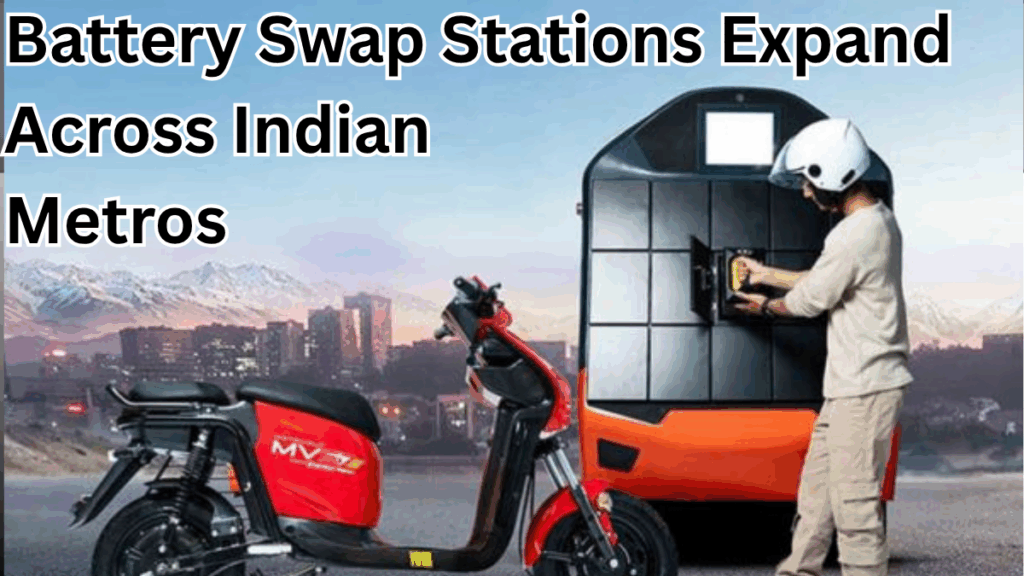In a major push towards electric mobility, EV battery swap stations are rapidly expanding across major Indian metros in 2025. This development is setting the stage for a future where electric vehicle (EV) users can recharge their vehicles in minutes instead of waiting for hours.
Let’s explore how this quick recharge infrastructure is transforming urban transportation.

Table of Contents
The Rise of EV Battery Swap Stations in India
The demand for EV battery swap stations has surged due to:
-
Growing EV sales in both two-wheeler and three-wheeler markets
-
Increasing government incentives for EV adoption
-
The need for quick recharge infrastructure to reduce downtime
With these factors aligning, Indian cities like Delhi, Mumbai, Bengaluru, and Hyderabad are now at the forefront of this battery swapping revolution.
Why Battery Swap Stations Are Gaining Popularity
EV users are switching to battery swapping because of its clear benefits:
-
Speed: Full battery swap in under 5 minutes
-
Convenience: No need to wait for charging
-
Cost-effective: Lower operational cost for commercial fleets
-
Scalable: Can be implemented in dense urban areas without long charging bays
Key Metro Cities Driving the Expansion
Battery Swap Station Growth by City
City |
Key Developments |
|---|---|
Delhi |
Swapping stations integrated with public transport |
Mumbai |
Dedicated hubs for e-scooters and cargo EVs |
Bengaluru |
Swapping corridors along IT parks |
Hyderabad |
Partnership with ride-hailing and delivery fleets |
Quick Recharge Infrastructure: The Future of EV Mobility
The quick recharge infrastructure provided by battery swapping solves two major EV challenges:
-
Charging Time: Cuts down charging time from hours to minutes
-
Range Anxiety: Enables longer commutes without worry
Additionally, it promotes sustainable transportation by making EVs more practical for daily users.
Government’s Role in Boosting Battery Swapping
The Indian government is actively supporting the EV battery swap stations through:
-
National Battery Swapping Policy (expected rollout in 2025)
-
Subsidies for swap station operators
-
Incentives for interoperability across brands
Benefits of Battery Swap Stations for Different EV Segments
EV Type |
Battery Swap Benefit |
|---|---|
Two-Wheelers |
Quick turnaround, ideal for delivery personnel |
Three-Wheelers |
Continuous operation for commercial fleets |
Four-Wheelers |
Pilot projects underway, urban fleet potential |
Challenges Ahead
While the future is promising, the expansion of EV battery swap stations faces some hurdles:
-
Standardization across manufacturers
-
High initial setup costs
-
Limited awareness among private EV owners
Industry players are working towards overcoming these challenges through partnerships and technological advancements.
FAQs
1. What are EV battery swap stations?
EV battery swap stations are facilities where electric vehicle users can quickly exchange their depleted batteries for fully charged ones, eliminating long charging wait times.
2. How fast is battery swapping compared to traditional charging?
Battery swapping typically takes less than 5 minutes, making it a vital part of quick recharge infrastructure, while traditional charging can take 30 minutes to several hours.
3. Are battery swap stations available for all types of EVs?
Currently, most EV battery swap stations cater to two-wheelers and three-wheelers. However, pilot projects for four-wheelers are underway in select Indian cities.
4. Is battery swapping safe?
Yes, battery swapping is designed to be safe, with stringent quality checks, automated locking systems, and temperature monitoring at swap stations.
Click here to learn more
